Dendrobium is a type of orchid that belongs to perennials. Plants look like small bushes, but since they have many varieties, they can vary greatly in appearance. Orchids even differ in height - from a small number of centimeters in dwarf varieties to one meter or more in giant ones. At home, flower growers prefer to grow low varieties.
Content
Description
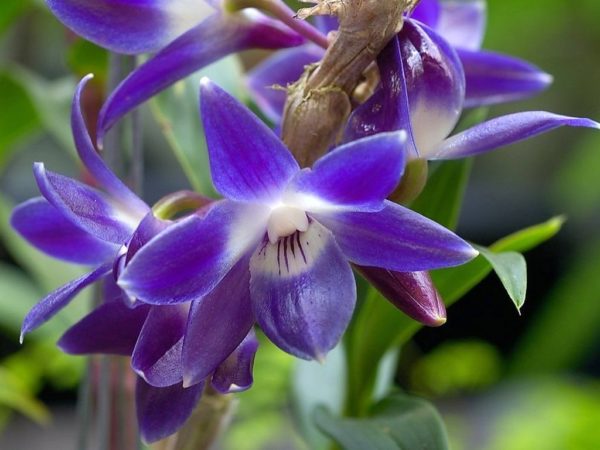 The root system of an orchid fulfills important values for its life: retention in the substrate, absorption of nutrients and fluids. The plant has straight stems with a brilliant overflow thickened from below. On top of the stems are leaves that have a green color. They have a different shape depending on the variety.
The root system of an orchid fulfills important values for its life: retention in the substrate, absorption of nutrients and fluids. The plant has straight stems with a brilliant overflow thickened from below. On top of the stems are leaves that have a green color. They have a different shape depending on the variety.
Dendrobium flowers vary in shape and color. The buds very closely cover the stems of the orchid and have a strong aroma. They appear in the second year of growth of the flower. Different varieties in inflorescences have from 1 to 3 flowers, and the size of the bud is up to 10 centimeters.
Plants bloom 2 times a year, and some once every 24 months. Usually a flower bought in a store does not require special care at home and at first it blooms beautifully and looks good. However, without leaving, he will not please bloom, and subsequently may die.
Varieties
There are a lot of varieties of Dendrobiums. Grow the most demanding:
- Dendrobium Nobile. This species is considered the most beautiful and unpretentious in care. The plant grows up to 90 cm in height. The stems are straight. At first, they stand straight and have a glossy tint, but then they can lean. Leaflets oblong, grow on both sides of the stem. In each peduncle, 3 or 4 flowers are formed up to 10 centimeters in size. Flowers grow on the 2nd year of the shoot's life. The base color is whitish, and along the edges pink or lilac. The plant blooms from January to May. Occasionally, this type of orchid does not give buds one flowering season, despite the usual care of it.
- Dendrobium Lindley. It has low stems, no more than 8 cm high. The color is golden yellow with an attractive smell.
- Kinga. The orchid is small in stature with thinning stems above, 25 to 45 cm high. There are leaves on each stalk. The inflorescence consists of 3-6 small flowers (1-3 cm), grow on the crown. Color from whitish to colorful purple. Buds appear in February during the month. The aroma resembles vanilla.
- Dendrobium Phalaenopsis. A large enough orchid with long straight stems. Leaves and flowers are at the top of the stems. Bolshevik flowers, up to 9 cm in size, in each inflorescence there are up to 40 pieces. Coloring of flowers from milky to purple, red and purple in all shades. Orchid blooms for 2 months (from November to January). Cut flowers stand for a long time in a vase fresh, so florists use them to decorate weddings and other events.
- Dendrobium berry ode. A variety of King dendrobium related to hybrids. Dendrobium Berry Oda. Its flowers, the color of which varies from white with a slightly pink tint to rich raspberry. It begins to bloom at the end of the winter months, and ceases only in June. It is very undemanding in everyday life and cultivation, easily adapts to the surrounding environment.This orchid normally refers to high temperatures (up to 32 degrees), provided that it needs the humidity in the environment.
- Dendrobium Phalaenopsis
- Dendrobium berry ode
- Dendrobium Nobile
- Dendrobium Lindley
- Dendrobium King
Conditions of detention and care
Before flowering, watering should be reduced and do not use top dressing. It is not superfluous at this time to use shower procedures with a water temperature of 34-41 degrees. Then in the axils of the leaves you need to remove the water. This contributes not only to cleansing the leaves, but also improves other beneficial processes. During the appearance of swelling of flowers, you need to start again watering and feeding.
Humidity and watering
Orchid Dendrobium develops in moist air (at least 40% -50%). A hot and dry atmosphere slows down the development of the plant. Better if the humidity is greater. To increase humidity, it is advisable to lay out moist stones, moss on the bottom, but do not pour water into the pan to avoid rotting of the roots.
To increase humidity, the flower must be sprayed with a spray gun. Especially this procedure is required to be carried out in the hot summer time and with the advent of the heating season.
Soil and top dressing
Soil for orchids is better to buy specialized. It’s good if there is a little peat in the soil. All these conditions contribute not so much to the production of nutrients, but to the consolidation of rhizomes and their better ventilation.
Dendrobium does not like frequent transplants, as it does not tolerate changes in the environment and living conditions. After the purchase, you do not need to rush to transplant the orchid. It is better to do this no earlier than six months later. The next time a transplant is needed only after 3-4 years. The plant develops better in a cramped pot.
Dendrobium transplantation is needed only in rare situations. It is best done after flowering. If the roots come out, and the pot becomes small, and in cases where rot has appeared, then you need to transplant the flower into another soil mixture, after removing the damaged parts of the rhizome.
These orchids need constant nutrition. To fertilize the soil, exclusively liquid solutions should be used. They can be poured into a pallet or spray bottle. It is not necessary to add fertilizers containing nitrogen, as this provokes the appearance of a large number of children. In this case, all the nutrients go to their growth and flowering may not occur. In this regard, when the sprouts reach half their size, you need to use fertilizers containing more phosphates than nitrogen. Tableted or granular is not recommended, as it leads to orchid diseases or death.
Root and Leaf Care
Orchids do not like the direct rays of the sun. In order to avoid sunburn of leaves, it is better to spray them early in the morning.
In the case of formation of wet spots on the leaves, you need to understand that the process of decay has begun. The reason may be that the room is low temperature. It is better not to spray the orchid if the temperature in the room is below 21 degrees. After the shower, you need to pat the sinuses of the leaflets, as in the event of stagnation of water in this place, rot may form.
There is such a phenomenon when the leaves of an orchid curl. Causes:
- significantly increased ambient temperature;
- fertilizer overfeeding occurred;
- too much moisture;
- the air in the room is too dry;
- temperature differences are present.
Dendrobium leaves twist for no particular reason, or may due to illness.
Such rot from the roots usually passes on to the leaves. To avoid this, it is urgent to transplant the plant. It is necessary to carefully remove it from the soil mixture. Then remove all the rotted parts of the rhizome and leaflets, and lubricate the sections with activated charcoal. Dry the plant for 2 hours.
Breeding
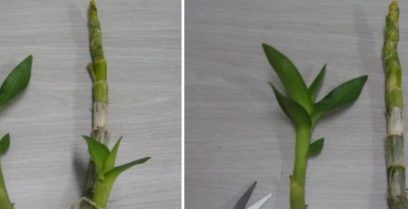 Reproduction of Dendrobium is carried out in several ways. The easiest way to propagate through children. When the pseudobulb does not bloom, but releases the shoot, it needs to be allowed to grow a little. Then cut with a sharpened, not dirty tool. To tighten the wound, you need to leave the cutaway shoot for two hours in the air. Then treat the cut with activated carbon and plant in a slightly damp substrate. It will not be superfluous to cover the pot with a plastic bag (to create a greenhouse effect).
Reproduction of Dendrobium is carried out in several ways. The easiest way to propagate through children. When the pseudobulb does not bloom, but releases the shoot, it needs to be allowed to grow a little. Then cut with a sharpened, not dirty tool. To tighten the wound, you need to leave the cutaway shoot for two hours in the air. Then treat the cut with activated carbon and plant in a slightly damp substrate. It will not be superfluous to cover the pot with a plastic bag (to create a greenhouse effect).
Another easy way is propagation by cuttings. Cut the stalk into three or four parts, and grease the wound sites with activated charcoal. Then you need to choose a container, fill it with moss, which will serve as a substrate. Put the cuttings in a container, cover for the effect of the greenhouse. The roots appear after three weeks, and after a while the children grow up. When the roots grow to 6 cm, it is necessary to transplant them into pots with a special substrate intended for orchids.
Division of an adult bush - so propagating is somewhat more difficult. For this method, only a healthy orchid with a good number of sprouts is suitable. Treat all sections with activated carbon. Separated cuttings should be left for a day in a slightly darkened place with good ventilation. Now transplant the plant into a pot of earth and care as usual.
Of course, an orchid is a whimsical plant, but its effectiveness and beauty are worth all the effort and hassle.

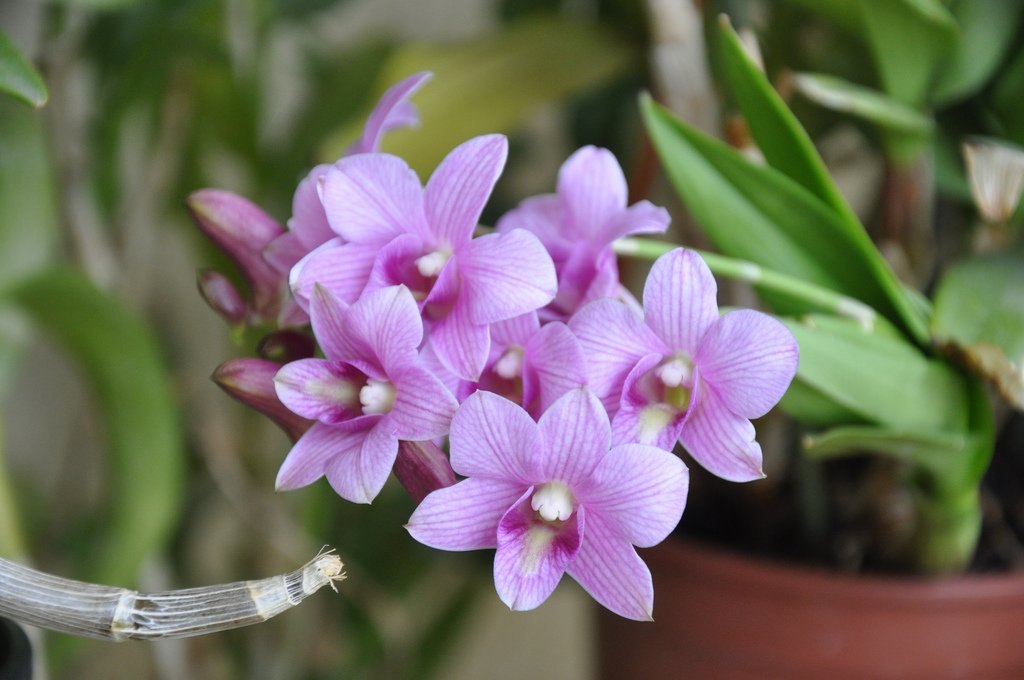
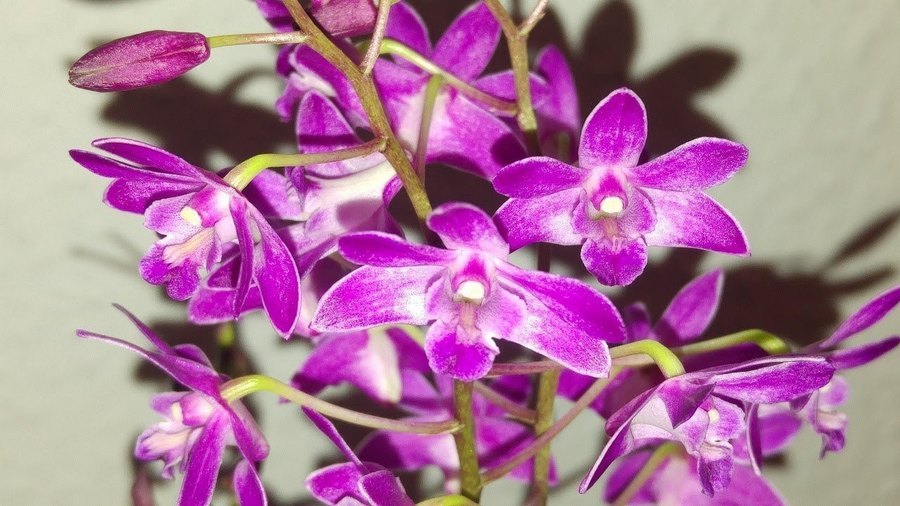
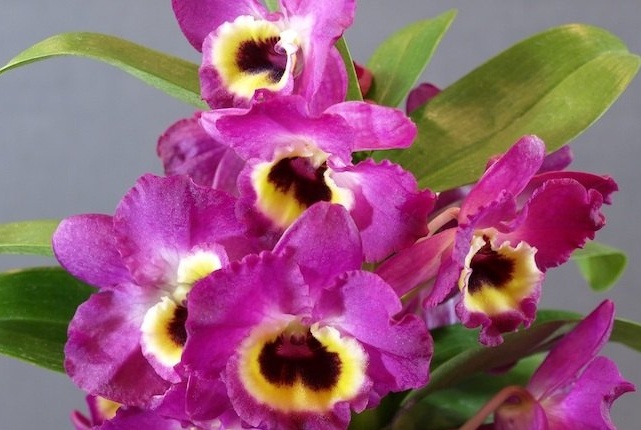
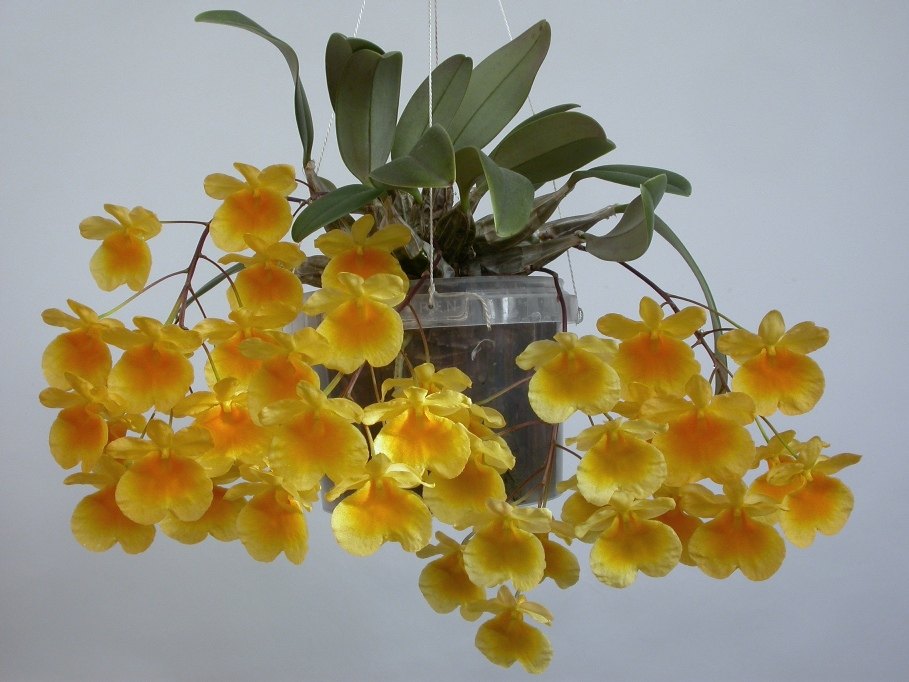
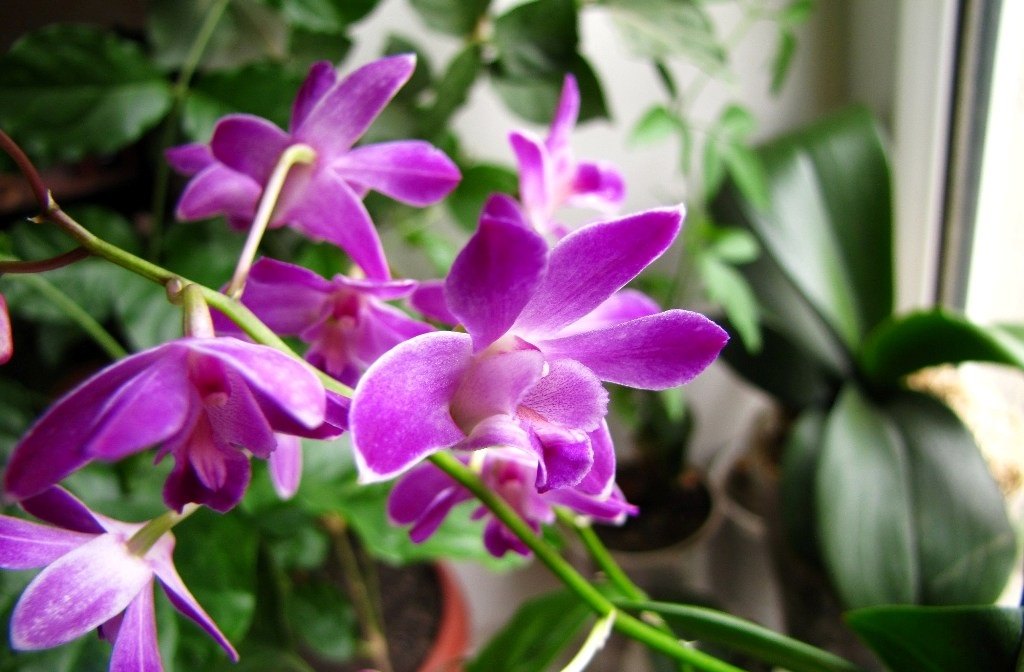
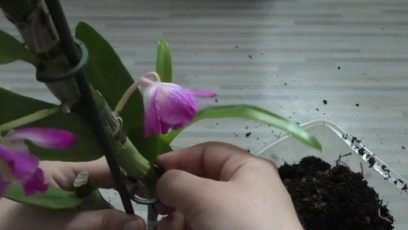
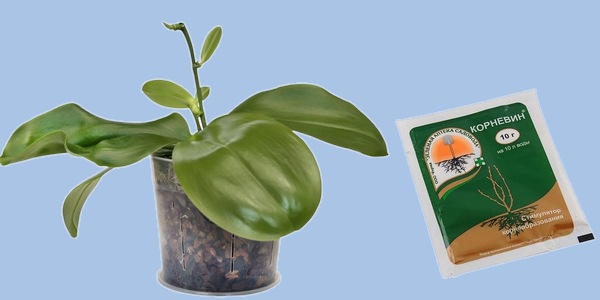
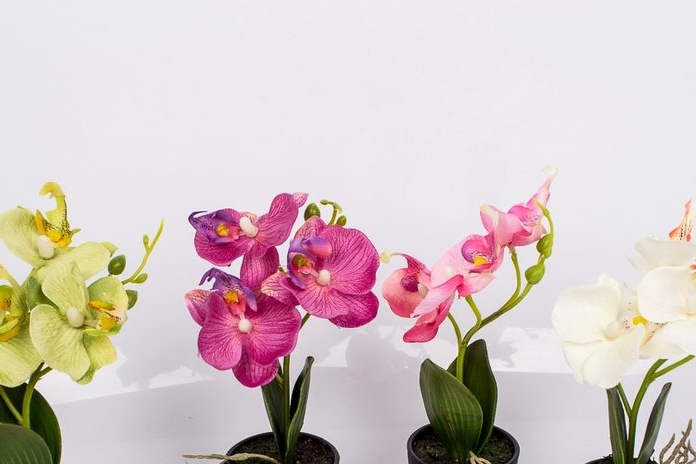
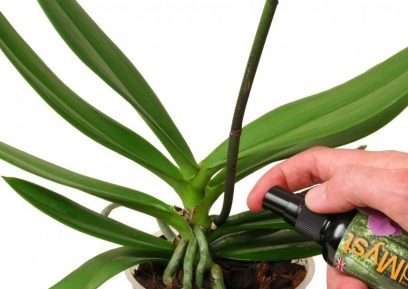
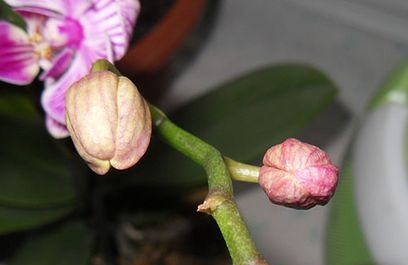 Reasons why orchids fall flowers and what to do
Reasons why orchids fall flowers and what to do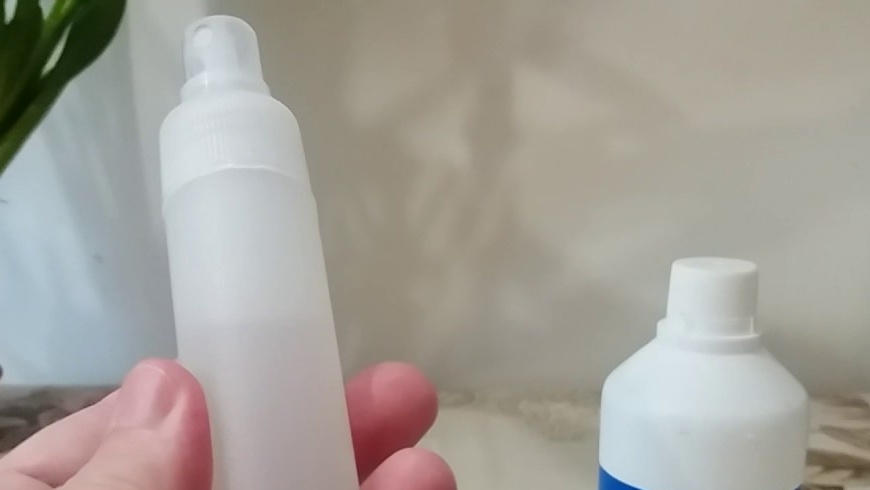 How to use hydrogen peroxide for orchids and why
How to use hydrogen peroxide for orchids and why Midges are wound up in the orchid: effective ways to get rid
Midges are wound up in the orchid: effective ways to get rid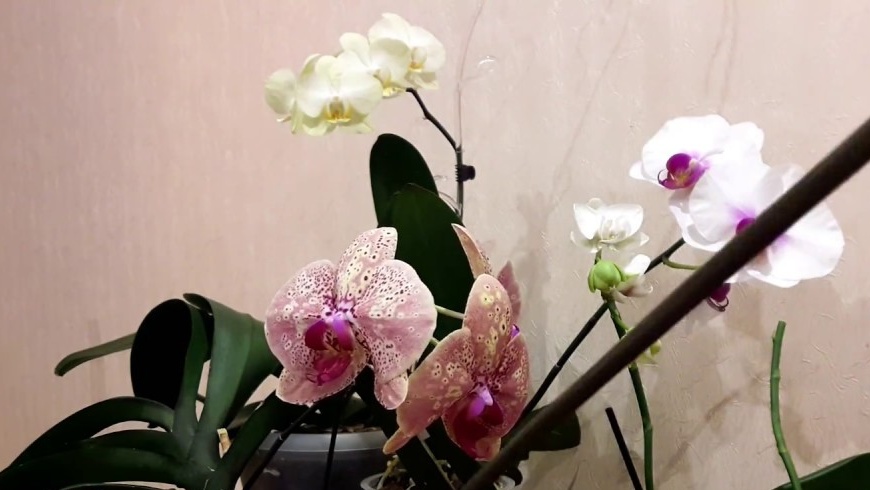 Is it possible to transplant an orchid during flowering
Is it possible to transplant an orchid during flowering